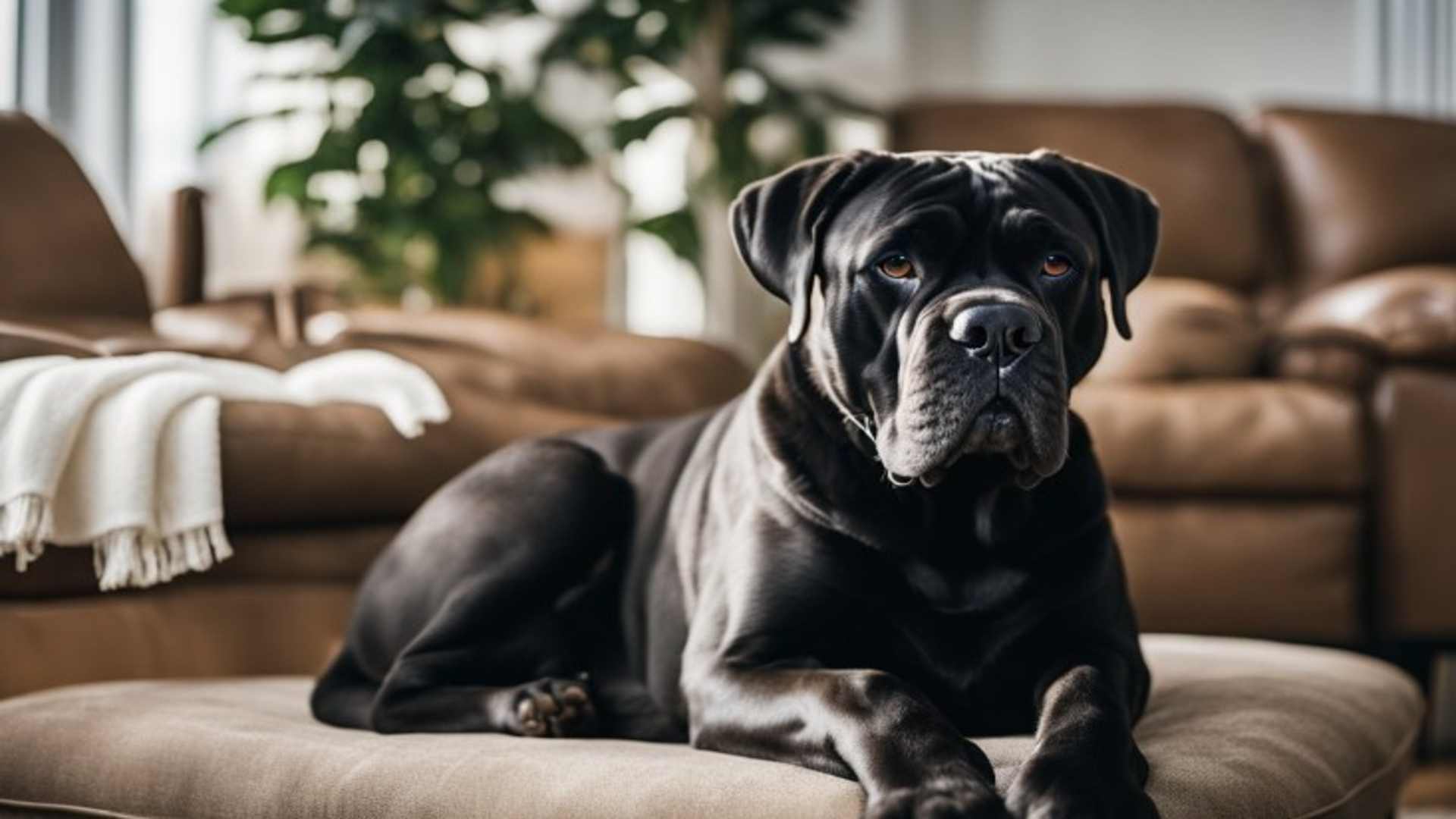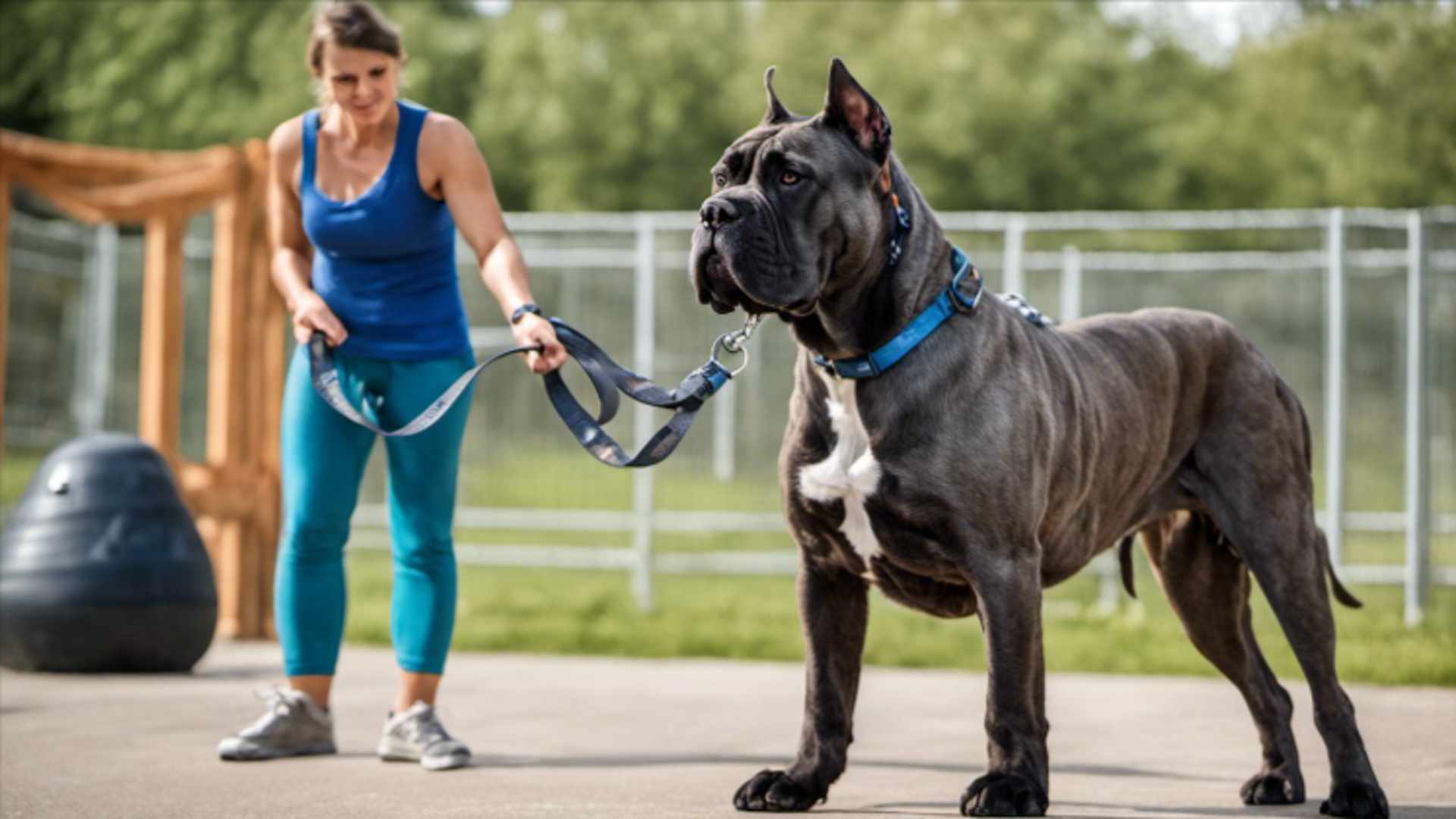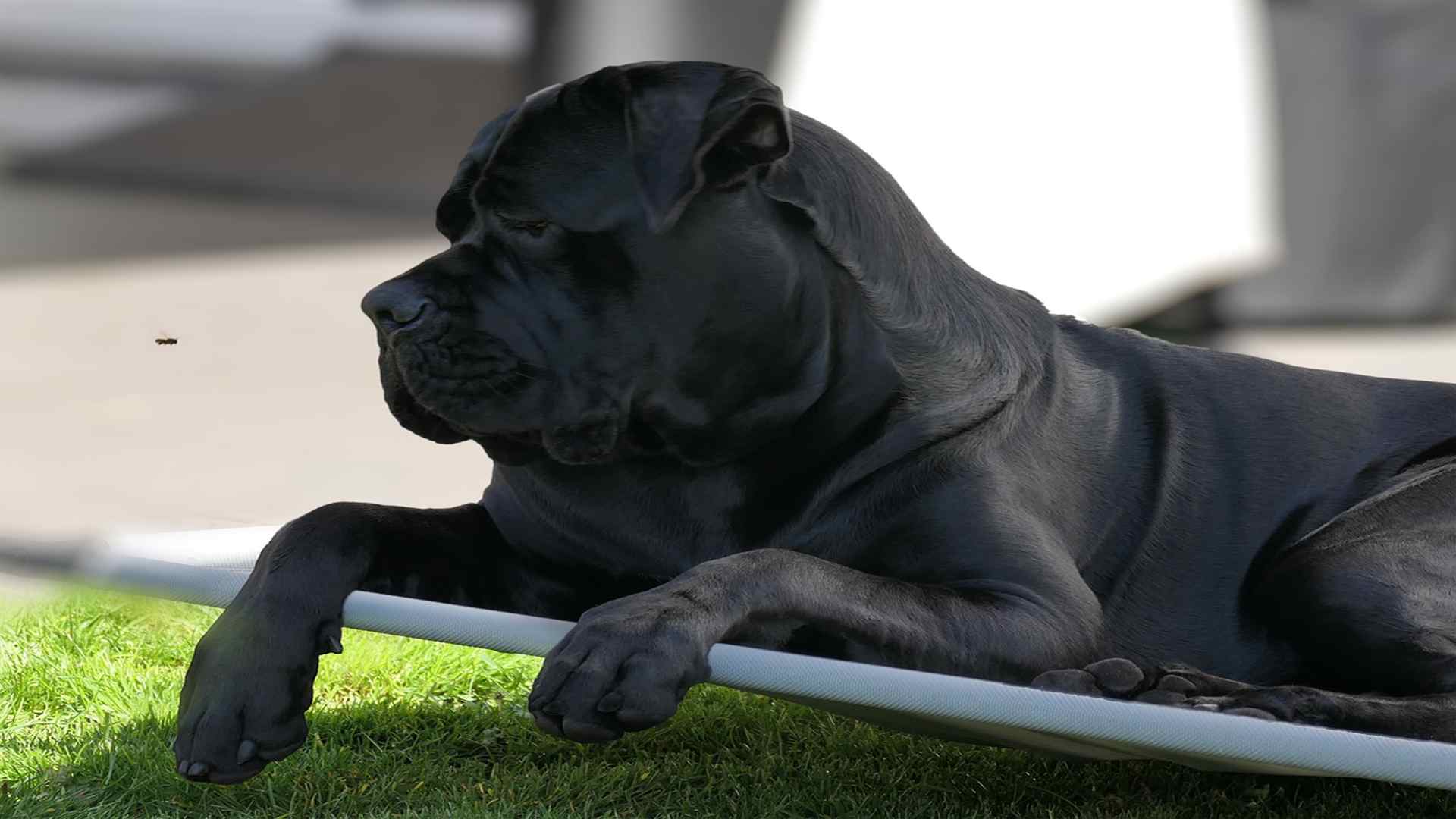The Cane Corso is a large and powerful breed of dog that has been bred to work and protect its owners. But not only is this breed strong, but it is also very sensitive to extreme weather conditions.
So if you’re thinking about bringing a Cane Corso into your life, you need to know how to keep them comfortable in both hot and cold weather, but don’t worry! In this article, we will explore all the ways a Cane Corso can stay safe and happy in any season.
What kind of dog is Cane Corso?
Before diving deep into the topic of Cane Corso’s hot and cold weather, it is important to know the basics of this large breed of dog.
A Cane Corso is an Italian Mastiff originally bred to work and protect its owners. This large, muscular dog is imposing yet sensitive to extreme weather conditions.
The Cane Corso has a short, thick coat that can range in color from black to fawn or brindle. They typically weigh between 75 and 110 pounds, making them one of the largest breeds.
Note: Although this breed can be aggressive when it comes to guarding their families, they are very loyal and loving companions when properly trained and socialized. With proper care and attention, a Cane Corso can make an excellent addition to any family.
A Cane Corso is an impressive breed of dog that loves its family and provides excellent protection. With the right care and attention, they can make an amazing pet for any home.
How does weather affect a Cane Corso?
Cane Corso has thick coats ranging from black to fawn or brindle and typically weighs between 75 and 110 pounds. Regarding weather, these pups need special care to ensure they stay comfortable.
In hot weather, Cane Corsos can become overheated quickly due to their heavy coat. It’s important to keep your pet out of direct sunlight during the hottest part of the day and provide plenty of fresh water and shade to rest in.
Be sure to take frequent breaks when exercising your pup in hot weather. If you notice signs of heat stroke, such as heavy panting or difficulty breathing, contact your veterinarian immediately.
In cold weather, a Cane Corso needs extra protection from the elements with a coat or sweater made specifically for dogs. These coats help keep them warm without restricting movement too much.
As with hot weather, be sure to limit outside time in extreme cold conditions and make sure they are provided with adequate shelter away from harsh winds.
Hot weather
The hot weather can cause a lot of discomfort for Cane Corsos. With their heavy, thick coats, these pups are prone to overheating and can become ill quickly if not monitored closely.
It’s important to provide plenty of fresh water and shade during the hottest times of the day, as well as frequent breaks when exercising your pup in hot weather.
Proper care and monitoring in hot weather can ensure your Cane Corso stays comfortable and healthy, so don’t forget to take breaks and provide plenty of fresh water and shade.
Be sure to watch out for signs of heat stroke, such as heavy panting or difficulty breathing, which should be addressed by a veterinarian immediately.
Thick coat and body temperature regulation
The thick coat of the Cane Corso is an important feature that helps them regulate their body temperature even in extreme temperatures. This double-layered coat, with its wooly undercoat and longer outer coat, provides insulation against hot and cold climates.
In hot weather, the thick fur traps a layer of air close to their skin, providing a cooling effect. In colder weather, the coat acts as a barrier against the elements, retaining body heat and keeping them warm.
Cold weather
When temperatures drop, it’s important to take extra precautions to keep your Cane Corso comfortable. To start, always provide a warm and dry area for your pup when they are outside. It’s also important to limit outdoor playtime and exercise in extremely cold weather or if there is icy ground.
Additionally, try providing coats that cover the chest and belly while outdoors. This helps protect vital organs from the cold and provides an extra layer of warmth. And don’t forget to groom your Cane Corso regularly!
Brushing away excess fur helps improve air circulation and ventilation, which can help keep them more comfortable in colder temperatures.
Tips for keeping Cane Corsos comfortable in extreme temperatures
Tips for keeping Cane Corsos comfortable in extreme temperatures:
- Provide plenty of fresh water and shade during hot weather.
- Take frequent breaks when exercising your pup in hot weather.
- Limit outdoor time in extreme cold conditions and provide adequate shelter from harsh winds.
- Provide a warm and dry area for your pup outside in cold weather.
- Provide coats that cover the chest and belly for extra warmth in cold weather.
Double coats, warm coats, and shorter coats
Double coats are a great way to keep Cane Corsos warm during cold weather. These thick, double-layered coats protect the dog from frosty temperatures and strong winds.
If your Cane Corso has a shorter coat, it is important to provide them with extra insulation in the form of a warm coat or sweater.
It is also essential that they have access to plenty of water, so they don’t become dehydrated in cold weather. Lastly, be sure to check if any areas of their body are exposed to the cold; this includes ears and feet, which may need extra protection as well.
Taking these steps will help ensure that your Cane Corso remains healthy and comfortable even during colder climates!
Does Cane Corsos overheat easily?
With their thick fur and heavy coat, it is easy to believe that Cane Corsos might be prone to overheating. However, despite their size, as long as they are not exposed to extreme temperatures, they do not tend to suffer from heat-related issues.
In fact, the Cane Corso’s protective fur helps insulate them against extreme temperatures, both hot and cold.
As long as your Cane Corso has adequate shade from hot sun exposure and plenty of fresh drinking water (in addition to regular exercise), then it should be able to weather most summer days without any problems.
Furthermore, the Cane Corso’s size also works in its favor when trying to avoid overheating since its large body mass better regulates its core temperature. That said, still, watch your pup closely on particularly hot days or after intense exercise sessions.
Finally, if you really want to make sure that your Cane Corso doesn’t overheat in the summer months, walking or other forms of exercise should take place either early in the morning or later at night when it is cooler outside.
Additionally, keep an eye out for signs of overheating, such as panting excessively or being listless or lethargic, all signals that your pup may be too warm and need a break!
What temperature is too hot for Cane Corso?
When it comes to keeping your Cane Corso safe from extreme temperatures, the general rule of thumb is that if it’s too hot for you, it’s too hot for them.
When considering outdoor activities with your Cane Corso, always be aware of the environmental temperatures and humidity levels.
Generally, temperatures above 85°F should be avoided, and your pup should never endure temperatures over 95°F.
That said, if you know that specific locations may have harsher weather conditions than those of your area, make sure your pet has adequate protection from extreme heat or cold before heading out for an adventure.
What temperature is too cold for Cane Corso?
Cold weather can put extra strain on their body as they may find it difficult to maintain their body temperature in extreme temperatures; therefore, it is important to limit the amount of time you leave your Cane Corso outside when it’s too cold.
For most Cane Corsos, the comfortable temperature range should be between 40 and 70 degrees Fahrenheit (5-21 Celsius). Anything colder can cause discomfort in your dog and should be avoided if possible.
Also, when temperatures drop below freezing, snow and ice can cause discomfort to your dog’s paws, so consider using boots or a paw balm for protection as well.
Can you leave a Cane Corso outside?
The short answer is yes, you can leave your Cane Corso outside as long as it is provided with shelter and the temperature is within a safe range.
It’s important to keep in mind that these dogs are not built to withstand extreme temperatures, so they will need access to shade, water, and other forms of protection from the heat during the summer months and a warm place to sleep during colder months.
It’s important to note that Cane Corsos are naturally quite active dogs and need plenty of exercise and stimulation.
Therefore, if you do plan on leaving your pup outside for extended periods of time, make sure it has access to toys and other activities to keep it busy while you’re away.
Summary
Before we move on to the conclusion, we’ve summarized this article into a short list of key points for you to remember:
- Cane Corsos can handle hot and cold temperatures as long as they are provided with adequate protection from the elements.
- The safe temperature range for a Cane Corso is between 40°F and 70°F (5-21 Celsius).
- You can leave your Cane Corso outside, but ensure it has access to shade, water, and other forms of protection from the heat and cold.
- Exercise should take place either early in the morning or later at night when it is cooler outside.
- Always watch for signs of overheating, such as panting excessively or being listless or lethargic.
Final thoughts
Cane Corsos are generally able to handle both hot and cold weather conditions. However, it is important to provide them with extra insulation during the colder months and to limit their exposure to extreme temperatures.
Taking these steps will help ensure that your Cane Corso remains healthy and comfortable even during cold climates!
Want to learn more about Cane Corso?
Ready to boost your knowledge to the next level? If so, check out the articles below:
- Do Shock Collars Work on Cane Corso? (Let’s Find Out)
- What Were Cane Corsos Bred For? Complete Guide ([year])






